Almost Dead: The Furthur interviews
Almost Dead: The Furthur interviews
Bob Weir and Phil Lesh revive the spirt of the Grateful dead with some serious help from guitarist John Kadlecik and some other young guns.
Originally appeared in Guitar World, March 2012. Reposted here in honor of the Furthur spring tour.
**
Bob Weir and Phil Lesh stand on the broad Madison Square Garden Stage, hunched over their instruments. The musicians, who began playing together as founding members of the Grateful Dead in 1965, look resolute and meditative. They appear to be oblivious to the roar of a sold-out house of rabid fans punching the air and twirling in their seats with delight. With the beatific grins and intense concentration of men lost in prayer, bassist Lesh and guitarist Weir resemble nothing so much as ministers preaching to their dedicated congregation.
They are guiding their band, Furthur, through an intricate passage of “The Eleven,” a complicated Grateful Dead classic that the original group effectively stopped performing in 1970. It is one of many chestnuts resuscitated by Furthur since the group’s 2009 formation. It’s not hard to grasp why Weir and Lesh are so excited about their longest running collaboration since Jerry Garcia’s 1995 death ended the Dead’s long, strange trip.
Guitarist John Kadlecik takes flight, twisting away from the solid foundation held down by Lesh, Weir, drummer Joe Russo and keyboardist Jeff Chimenti, eventually touching back down to the song’s riff to rapturous applause. With the three new members’ thorough understanding of the Dead catalog and their high level of musicianship, as well as the subtle addition of two backup singers, Furthur sometimes sounds like a Steely Dan version of the Dead. The band is threading a delicate musical needle, at once sounding more Dead-like and more creatively original than any of the previous post-Garcia formations.
 Tearing up ”The Eleven” and hundreds of other Dead classics is second nature to Kadlecik. The 42-year-old guitarist spent 12 years fronting the Dark Star Orchestra, a tribute band specializing in recreating specific performances, from the Dead’s 30-year career. His encyclopedic grasp of the Dead repertoire and Garcia’s playing and tone make him the perfect guy to complement Lesh and Weir’s sturdy, expansive grooves, but he is proving to be much more than a tribute band imitator.
Tearing up ”The Eleven” and hundreds of other Dead classics is second nature to Kadlecik. The 42-year-old guitarist spent 12 years fronting the Dark Star Orchestra, a tribute band specializing in recreating specific performances, from the Dead’s 30-year career. His encyclopedic grasp of the Dead repertoire and Garcia’s playing and tone make him the perfect guy to complement Lesh and Weir’s sturdy, expansive grooves, but he is proving to be much more than a tribute band imitator.
Kadlecik is the first guitarist to do for Garcia what Warren Haynes and Derek Trucks have done for Duane Allman – nail the master’s style perfectly so that it can be expanded upon. Without the right amount of skilled mimicry, the material can’t come to life. Without doing more, the songs sound stale. Kadlecik has struck the delicate balance that allows the music to soar, exactly what Lesh and Weir were searching for when they sought a new direction after the Dead’s last tour ended in 2009.
In the 17 years since Garcia’s death, Lesh and Weir have alternated between their own groups (Phil and Friends and Ratdog, respectively) and coming together with drummers Mickey Hart and Bill Kruetzman and different guitarists as the Dead. Furthur is their first effort together without the percussionists.
“That last Dead tour reminded Phil and I of how much we enjoy playing together, but feeling like we needed a new venue to do so,” says Weir. “Decades of playing together led us to learn how to intuit each other and know where each other is going. I could get to wherever Phil was going and be there with a little surprise for him. And he could do it for me – and these things can happen in such intuitive ways that it’s just fun. We wanted to take that and run.”
GW: Bob, you and Phil long approached Grateful Dead material by trying to re-imagine rather than recreate it. Did you make a conscious decision to reverse course by bringing in John from the Dark Star Orchestra, a fantastic Dead tribute band?
WEIR: Not really. I understand why it would appear that way, but people told us that John was great, so we had him out to play with us – and as well as he could play the Jerry stuff, it was actually just as important for us to make sure that it wasn’t all he could do. He can play Jerry chapter and verse or go off in new directions and he is certainly not a mimic. He’s fast on his feet, so he can hear what we’re up to, grasp where we’re headed and be there waiting.
Also, I have not made many conscious efforts to “re-imagine” songs. I just let them happen the way they’re going to happen. I always required Ratdog to play any Grateful Dead song we were going to do once very true to a late recording to make sure they understood the source material. Then we let it go where it wanted to go, and we do something similar with Furthur.
GW: John, at your audition, did you get a sense that showing you could not play like Jerry was as important as showing that you could?
KADLECIK: Yes. First, I have to say that I almost missed the whole thing because Bob’s manager sent me an email that ended up in my SPAM folder. By the time I found it, I thought I might have missed the boat. Luckily, I had not and flew out to San Francisco, along with the other guys they were considering…
WEIR: And by the end of the week, it became clear that we had a band. Phil and I felt the fire and were excited to see where we could go.
KADLECIK: They threw mountains of repertoire at us and definitely wanted to see how I would respond to leaving behind what I knew. They needed to see how flexible I would be and wanted to feel out if I was stuck in their old arrangements, which was no big deal to me, because in Dark Star we had five different arrangements of every song. The idea that these songs were not static was not foreign to me.
WEIR:And that’s a key thing to understand: most of these songs did not remain static within the Grateful Dead. We are not really making special efforts to recreate the past with Furthur – at least I don’t think so, but I’m way too far into the forest to be able to see a single tree.
GW: Why did you want to do this without Bill or Mickey? And why not two drummers, whish is a Dead signature?
WEIR: When the four of us are involved, the expectations are different. It just changes in that way. We did start with two drummers, but Jay Lane went back to whence he came – Les Claypool and Primus. It changed the dynamic in a good way. Joe is a very strong and very busy drummer, so we felt no need to start looking for another guy.
GW: You have said the last Dead tour “felt like work.” Why was that the case?
WEIR: It just seemed like it was taking a lot of effort to make the Dead work and it was time to look in some different directions. The Grateful Dead was one long, decades-long continuum until Jerry died in 1995. When we reconvened as the Dead, that continuum was missing and so was Jerry. We could go for a while just playing and having fun, and we regrouped with various guitarists and other members, but it became obvious to us that there was something missing.
At that point, we had a choice: either we just stick it out and keep going with it and it’s going to be a lot of work or we can break up in various shards and go new places quicker because we’re bringing new blood into the music. We opted for that. We can dust the Dead off every now and again and take it out and see if anything changes and we will have some fun doing that.
GW: Are you surprised at the overwhelmingly positive response from Deadheads, including some old naysayers who have tsk-tsked every group since Jerry died?
WEIR: I’m not surprised. When we all got together and started playing, we realized we had new places to go. This outfit is a little faster on our feet than previous ones, but to be fair to the Dead it doesn’t come with the same expectations, so we have more room to work. Like I said, that’s the gist of why Phil and I wanted to work together but not in a context of being “The Dead.” We constantly throw curveballs at each other and that’s what we really wanted to do.
KADLECIK: What’s remarkable is the degree to which both Bob and Phil are still really focused on being present in the moment with improvisation. They truly are masters and they will not settle for something being good and sticking with it, or be afraid to try something completely new. It’s very inspiring. It’s easy in live music to get on autopilot and those curveballs Bob talks about are ways of keeping each other away from that. Sometimes any of us might be feeling a little off and we try to prod each other to dig deeper. Sometimes for me that can mean almost going into an internal trance, a prayer to your muse to plead, “Please give me something.” [laughs]
During my early days with the band, we’d get into rehearsing a jam section and we’d stop and talk about breaking out of the style. The more we did that and the more we actually get the collective group vibe happening, it became more and more comfortable to trust. With the DSO I was doing an experiment in restraining my influences to just Garcia – I have a lot of others but I kept them bottled up and now they’re coming out more.
GW: So you actually feel less constrained to sticking with Jerry licks in Furthur than you did in DSO!
KADLECIK: [laughs] Actually, yes. And the longer we play together, the more free it is and the more I get a sense of a look from Bob or Phil that says “change gears.” I’m really wrestling with the dynamic of being thought of as “that Jerry guy” and knowing where to draw the line. That’s sort of the essential challenge. The jamming this music demands is all about balancing two opposing directions. There are infinite varieties, but you’re staying within certain boundaries to create a structure to hang things on.
The other interesting factor is that a lot of what people identify as Garcia licks are actually arrangements or orchestrated two-guitar parts. It’s very much a shoulder-to-shoulder conversation. I may be slightly in front from a melodic standpoint, but it’s really a free-flowing thing and we support each other
GW: Can you give a specific example to illuminate Bob’s overlooked contributions?
KADLECIK: There are many, but a good one is “Scarlet Begonias,” which has really intricate arrangements between Jerry and Bob’s parts. It’s a very unique approach and the deepest roots of the style are in the polyrhythm of African drumming, where five people can play similar sounding things and everyone’s voice is heard. In that kind of setting, it doesn’t hang together if I throw something completely different in there.
There’s a pretty short list of really successful two-guitar teams and Bobby and Jerry are high on it. They came up with some of the best arrangement ideas that ever happened in rock and roll. To my ear, it is hybridized between bluegrass music and Coltrane’s classic quintet arrangements. And there are some songs where Bobby and Jerry’s style dovetails with what Dickey and Duane were doing in the Allman Brothers Band – the ABB’s “Leave My Blues At Home” is a great example.
GW: Bob, you and Phil have such very unique styles that maybe only fully can blossom with one another. With the Grateful Dead, you really created new ways of playing rhythm guitar and bass – and you did it with one another. Are you more relaxed playing with him, in ways that allow you to just drop thinking and play?
WEIR: Hmmm. That’s an interesting thought, actually. I’ll have to say not really because you have to be on your toes and we’re constantly pushing. We’re poised for anything and very confident, but I’m not sure relaxed is the right word, because the beauty of this thing is we’re always trying to push and prod each other in different directions and to new places. I’m part of a bigger picture and hopefully it’s nothing you can think your way through. It’s something you have to feel. We don’t know exactly what we’re going to do next and that’s the fun part.
KADLECIK: Bob and Phil have a very unique, interlocking style and it’s amazing to observe on stage every night. One thing that has been really fun and endlessly interesting has been the experience of writing new material with these guys, which we have been doing since our very first show.
Songwriting is a completely different arc from performance and seeing some very experienced writers and arrangers work has been fantastic. Most of the stuff is brought in with a fairly abstract framework. Sometime we have to try out an arrangement to even know if it’s going to stick. Then it will go back in the oven and all of a sudden there are sections in 6/4 time. Big changes happen: whole sections get thrown out or added to. It’s been incredibly exciting to be in the middle of this process.
GW: Could this material, some of which is being worked on with lyricist Robert Hunter, lead to a Furthur studio album?
WEIR: We do not have any plans to record but I don’t see any reason not to head that way. We’ve got the great facility in my [new] TRI Studio, which has been a gas to put together, even if it has at times freaked out my accountant. I had a couple of good years and had some nickels in my jeans and then the good folks at API Audio offered me a real sweet deal whereby if I would come play their hoedown, they would give me a substantial discount on their top of the line board, with all the bells and whistles. I reacted quite smartly and jumped on a plane.
Then I found a fantastic building built as a studio but heading to a bank sale and got a great deal and the end product of all this is an absolutely sterling facility, with audio and video capability as great as you can get and a mix of large and small rooms, the biggest of which features Meyer Sound Constellation, with 80 speakers on all sides and in the ceiling. We can recreate any kind of acoustic ambiance, from a living room to a stadium and you can reshape any song on the fly. It’s remarkable and is a place where live music can be broadcast on the web in the highest possible quality. You can plug your computer into your home theater system and be inside the band. It’s the most intimate musical experience you can get. You can have a bunch of friends over and go to a concert with no lines or security to deal with. We’re trying to put a stage in everyone’s living room.
GW: The Grateful Dead never had setlists and rehearsed inconsistently. This band has specific setlists for every show and has had extensive rehearsal time. The result is a much more polished sound. Is there as much room in Furthur for spontaneity as there was in the Dead?
WEIR: Of course there is. Rehearsal only makes spontaneity easier and better, but it’s not as different as you and many others think. It’s still complete will of the wind with Furthur and the Dead practiced more than we had a reputation for. Also, we spent so much time on stage that we all knew where we were headed.
We started using setlists in this band because some of the guys needed to bone up on tunes. And our working repertoire now is well over 200, while the Dead ever took out more than 100 at any given point, so it takes some more forethought, but again the Grateful Dead wasn’t operating as completely on the fly as people imagine.
Basically, Jerry and I would plot out the first few songs and then let the set unravel from there. We usually had in mind what we were going to close with and it was a matter of making it all flow. For the second set, we would decide what we were going to close with and anyone could come chat about it during the drum segment and we would sometimes craft concepts.
GW: This is the longest running post-Grateful Dead collaboration. Is it an ongoing band?
WEIR: Oh yeah. I’m not sure we’re going to do four tours a year. Next year we might do three because we don’t want to run ourselves out of gas. But what I’m here to do is play and I think Phil feels that way as well. And we’re really happy with this band we’ve got together here.

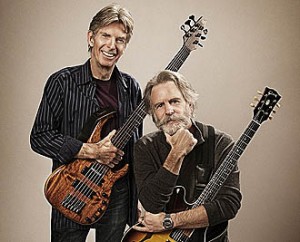


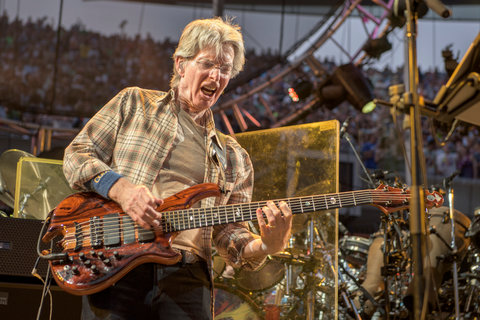
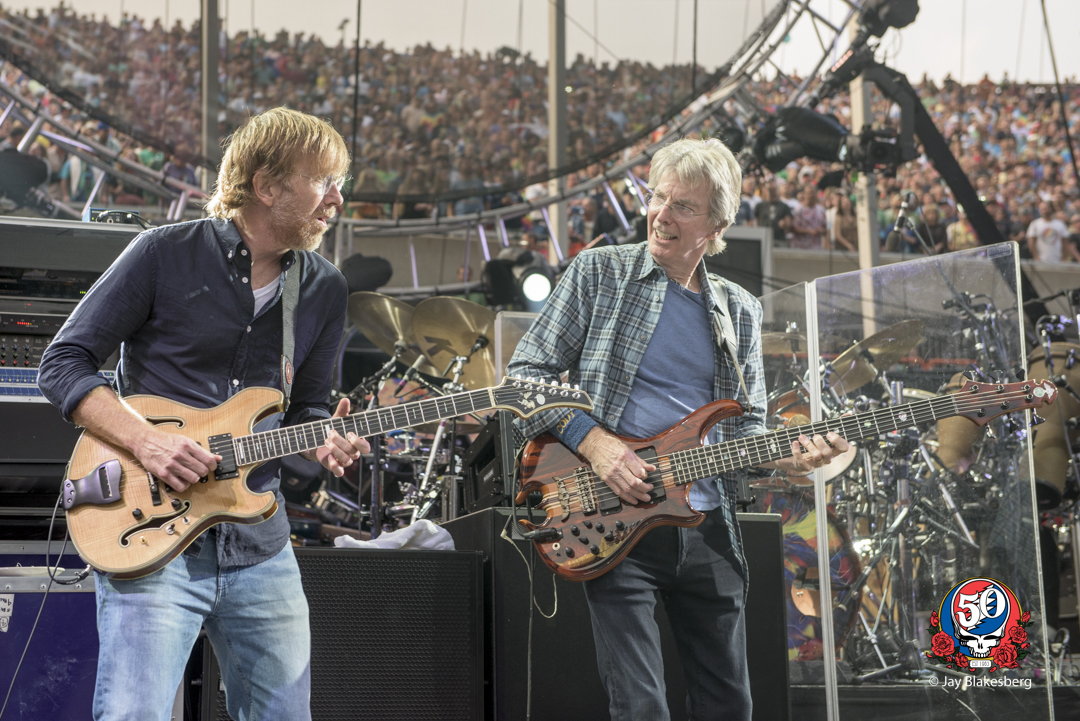
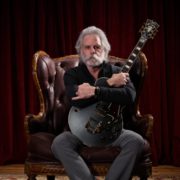
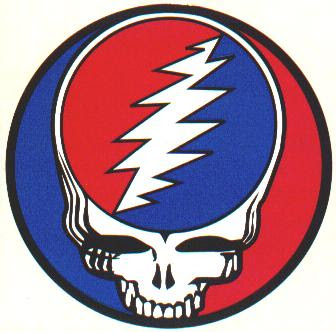
Just finished the book and here to check out the blog. Super piece, might have to catch up with the tour in NC or GA. Bob’s new studio is really quite powerful as well. I caught the recent Bridge session (from my home office) and alternately laughed and teared up at the remarkable product he deilivered and the life forces that that music empowers. Thanks Bob! I’d like to see Woodie Alan at TRI…congrats on the movie deal, what a great story.
Thanks man. I agree on all fronts. Glad to have you on board.
great article! very entertaining and insightful.
Thanks. Glad you found it.
Thanks for your wonderful piece. I attended the entire 2012 summer tour (see my tour blog ‘website’ reference) and have to admit (with many others) that “I just love this band!” As a veteran of somewhere around 3 digits of shows, I enjoy Furthur every bit as much as I did attending Grateful Dead shows. Yes, some things have changed, but for many of us it was always the music- above any individuals. Bob and Phil have absolutely kept the spirit alive and I find myself hoping we’ll get 10+ more years like this before the whole thing becomes too tiring for them to continue. I’m proud to be a fan of musicians who have exhibited a life long devotion to the musical trajectory they created and to the new American folklore it expresses.
Thanks Michael. Glad you are getting so much out of the shows!
I agree whole-heartedly Mr. Goshey. Great article about a great band. There are currently 3 complete Sweetwater shows from January floating on YouTube; these convinced me to pack up and head to Boulder for the shows February 22-23.
Michael, have we met? 😉
Jb
John really sucks. He needs to lay off the Jerry ballads. He ruins it with his lack of spirit, and marginal voice. What a shame!